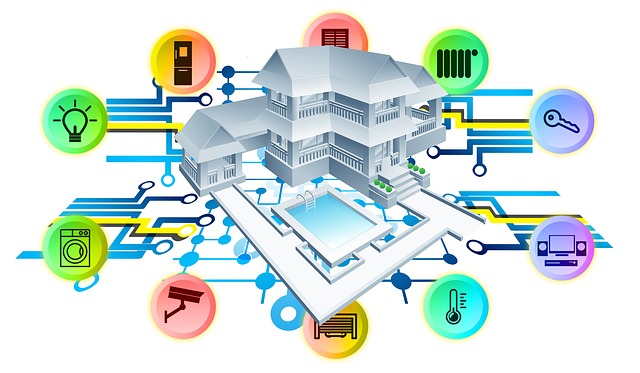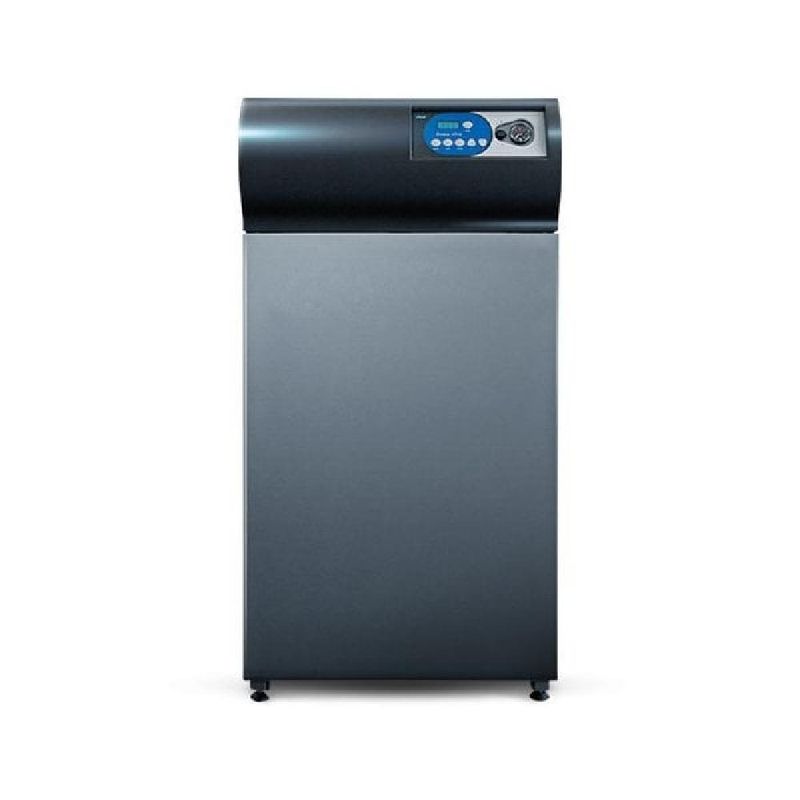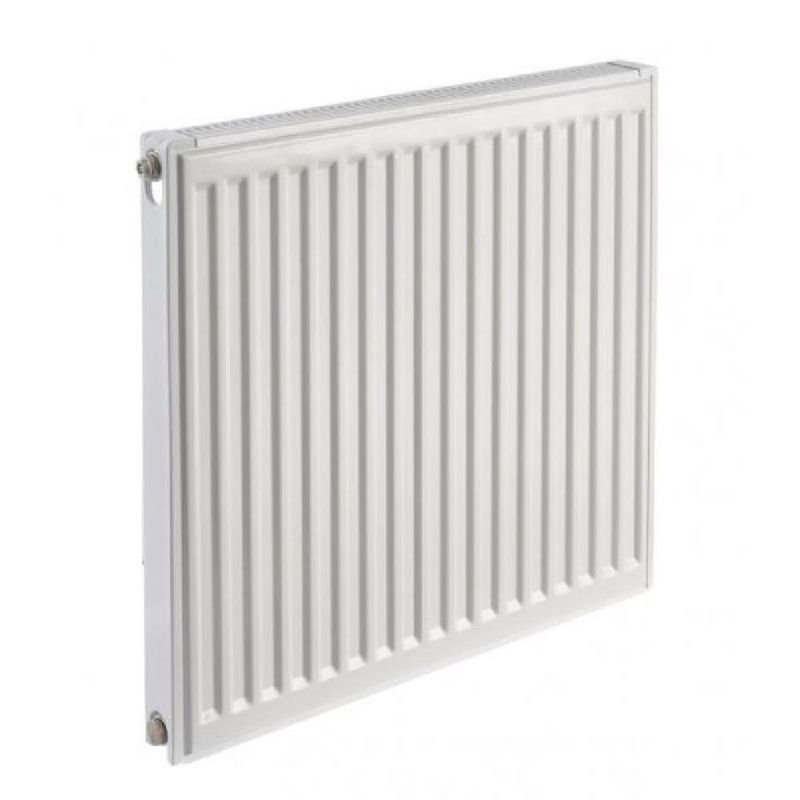Central heating is one of those things we often tend to take for granted and not think much about.
Until something goes wrong, that is, and we’re suddenly left without any heating or hot water in the middle of November.
And as we’re desperately scrambling to fix the issue ourselves or trying to find a professional to do it as soon as possible, we start asking ourselves:
How does central heating work? What are its main components?
To find out the answers to these crucial questions, at Plumbing Superstore we dug deep into the subject of central heating and ventilation.
Without further ado, let’s crack on.
Table of contents:
What is central heating?

A central heating system provides heat and, optionally, hot water to a part of a building, a whole building or even a group of buildings. It’s an essential part of the heating, ventilation and air conditioning (HVAC) system, which can be used to warm as well as cool inside spaces.
But how does a central heating system work exactly?
Check this out:
In contrast to space heating systems, central heating systems produce heat in a single ‘central’ location, which may or may not be located in the actual centre of the house or building. Generally, this is a basement, furnace room, mechanical room or boiler room.
At home, your central heating system typically consists of a boiler, radiators and pipework. The pipes transport heat from the boiler to the radiators in various rooms in the form of hot steam or water.
While there are several different types of central heating systems, the most common one in the UK is the so-called wet or hot water heating system which uses a boiler. As the name suggests, it utilises hot water to convey heat evenly across your home.
But that’s not all:
Other methods of central heating include:
- warm air heating systems, which heat air from the outside with a furnace and distribute it via ducts;
- electrical heating systems, which have either storage heaters or oil-filled radiators instead of a boiler;
- ground source heat pumps – an energy-efficient method which utilises naturally occurring thermal energy found in the ground.
Types of boilers

As we mentioned, gas central heating wet systems are most popular in the UK, although you can also come across electric wet central heating system types occasionally.
You might be wondering:
Why gas boilers in particular?
There are a few reasons:
First, most UK homes are already connected to the gas network, making this a convenient solution.
Second, gas is more energy efficient and cheaper than the main alternatives, allowing you to save money on your energy bills.
Third, the UK has significant gas reserves in the North Sea, so the country is capable of meeting most domestic demand without the need to import large quantities of gas from overseas.
Next, let’s take a closer at the different boiler types to improve our understanding of how does central heating work?
Combi boilers
How does a combi boiler work?
Combi (combination) boilers supply both heating and hot water on demand from a single unit. Compact and easy to maintain, they feature an integrated heater which heats water directly from the cold water mains instead of heating and storing it in a water cylinder.
Because of their relatively smaller size, combi boilers are particularly popular for use in flats and smaller houses, where space is at a premium.
What’s more:
They come with lower maintenance costs and are highly convenient, providing a plentiful supply of hot water exactly when you need it.
As a result, combi boilers are the preferred choice in new builds.
Conventional boilers
Conventional boilers, also known as regular or heat only boilers, work in an open-vented system, meaning pumps, valves and other components are fitted on the outside rather than integrated into the same unit, as is the case with combi boilers.
As their name suggests, heat only boilers don’t supply any hot water, making them far less versatile than combi boilers.
On the other hand, they’re extremely effective when it comes to keeping a room well-heated for a longer period of time.
Many conventional boilers, especially those found in older properties, are fairly simple in design, featuring only a cold water tank, a feed and expansion tank, and a hot water storage tank.
But that’s not to say they don’t have any benefits:
Because most models are pretty basic, heat only boilers work particularly well with older radiators, preventing leaks that might occasionally occur due to the higher pressure of combi or system boilers.
Last but not least, conventional boilers are considerably cheaper than other types, making them a cost-effective solution.
System boilers
System boilers are something of a hybrid between conventional and combi boilers.
Here’s the deal:
Like conventional boilers, they have a large hot water cylinder.
But unlike regular boilers, they don’t operate in an open-vented system.
System boilers are ideal for larger houses with two or more bathrooms and correspondingly high hot water demand, as the unvented system is able to deliver stable hot water flows to several outlets at the same time.
On the downside, system boilers come with a large hot water storage cylinder, making them considerably larger in size than combi boilers.
Now:
Many people ask who use conventional and system boilers ask:
Does hot water need to be on for central heating?
Contrary to common belief, it really doesn’t. That’s because, once heated by your boiler or immersion heater, the water in the tank will stay warm enough for anywhere from several hours up to a whole day provided the cylinder has a good insulating jacket.
If you want to find out more about boilers, check out our dedicated Boilers buyer’s guide!
Now that we’ve covered boilers, it’s time to move on to another important component of central heating systems in the UK and find out how radiators work.
How do radiators work?

Central heating radiators within a wet or hot water type of central heating system work through the convection principle. When the pipework delivers hot water from the boiler to the radiator via the pipework, the temperature of the surrounding air also rises. The hot air then circulates around the room, warming the entire space through convection.
Now:
Most wet central heating systems in the UK utilise standard 15mm copper tubing. The pipes which connect the boiler, pump and split-off points are larger – either 22mm or 28mm in diameter.
Keep in mind that hot water doesn’t remain within the radiator indefinitely. Instead, it constantly flows through the central heating circuit to the next radiator in the chain.
Next:
Cooler water will flow all the way back to the boiler for reheating, and the entire process will be repeated as long as the system is switched on.
To ensure that all radiators operate at similar heat output, a process known as balancing regulates the water flow into the radiator with the help of a lockshield valve.
But wait! There’s more:
Depending on the types of heating systems and the specific models, you’ll have different central heating controls that will allow you to set and regulate the boiler temperature and the room temperature.
These include a wide range of hot water and heating programmer options, central heating thermostats, thermostatic radiator valves and more. In recent years, smart controls, which allow you to set your home’s temperature on the go, have gained in popularity as a convenient, energy-efficient solution.
Central heating systems explained
Central heating systems have plenty of benefits. Consisting of a boiler, pipework and radiators, they’re highly efficient and easy to maintain.
In fact:
Even if you’re not a seasoned DIYer, you’ll only need basic guidance and a few simple tools to drain a heating system with a boiler.
In addition, central heating systems deliver heat in a steady, passive way that doesn’t involve any excessive noise or draughts. You can also easily control the temperature in each room for greater comfort.
Sounds great, doesn’t it?
And now that you have a clearer idea of how central heating works, you won’t have to panic the next time there’s a minor glitch in the system.

















